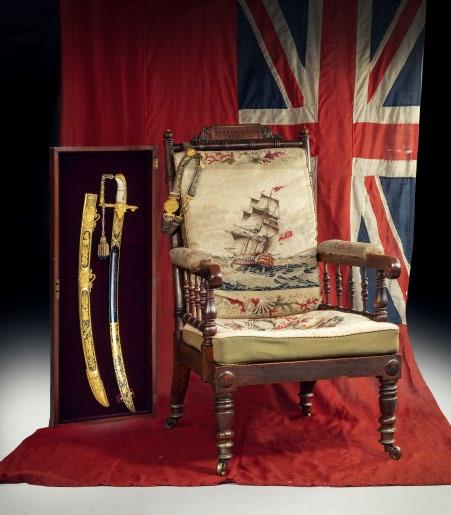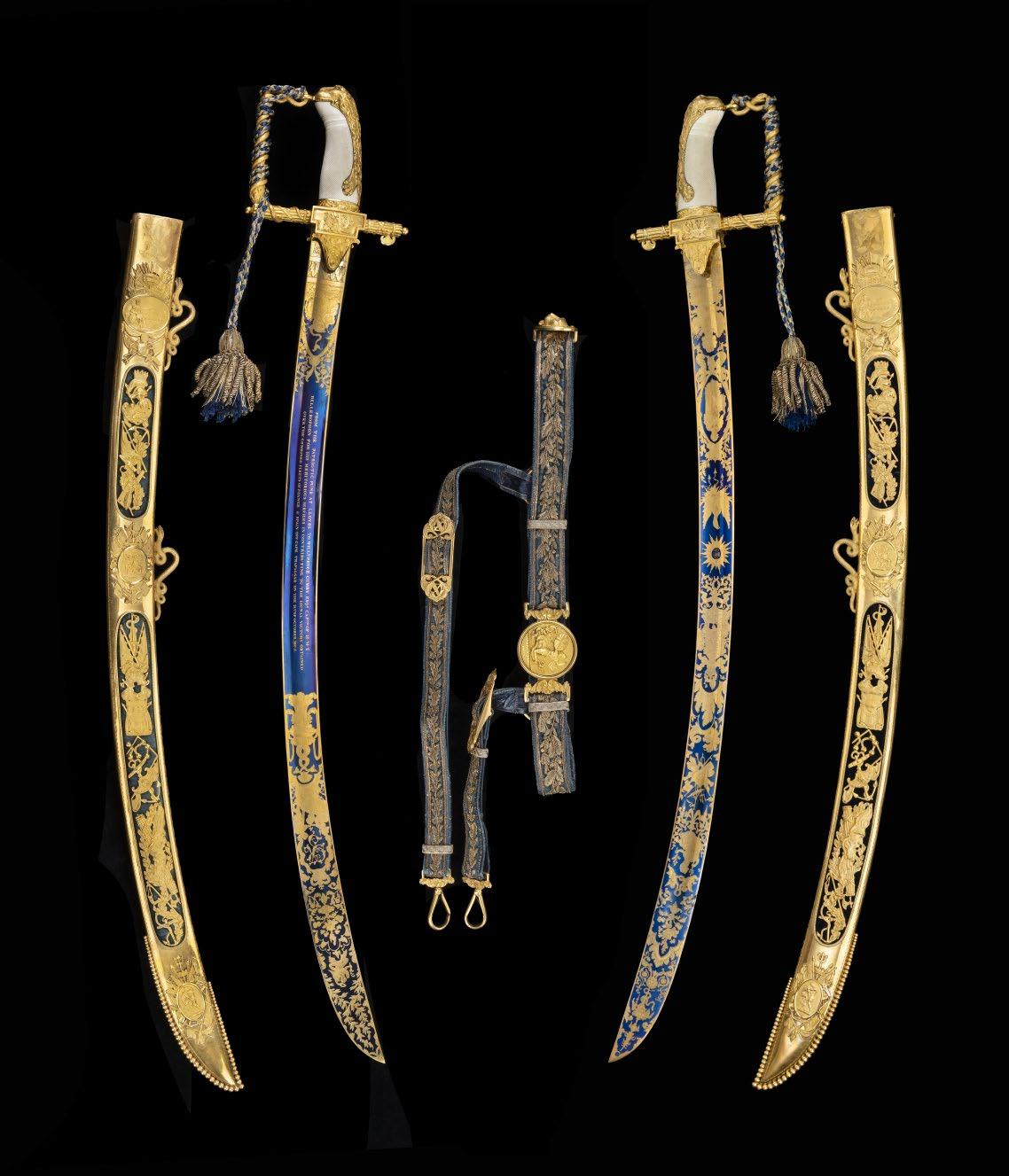
4 minute read
The £100 Trafalgar Sword awarded to William Pryce
26 The ‘Billy Ruffian’ story – H.M.S. Bellerophon (1782-1836)
On the following pages there is a capsule collection of items related to the famous Trafalgar battleship H.M.S. Bellerophon, known to her sailors as ‘Billy Ruffian’ because they could not pronounce her classical Greek name. The following shortened excerpt from David Cordingly’s enthralling history ‘Billy Ruffian: The Bellerophon and the Downfall of Napoleon. The Biography of a Ship of the Line, 1782-1836’ (Introduction pp 1-2) outlines her exceptional career.
Advertisement
‘More than any other ship of her day the Bellerophon reflected the history of her times and in particular the long conflict between Britain and France which began in 1793 and ended at Waterloo. She was in at the beginning, she was in at the end, and she played a crucial role in the years in between. She was the first ship to engage the enemy in the opening moves of the Battle of the Glorious First of June, the first fleet action of the naval war against Revolutionary France. She was with the squadron commanded by Nelson which hunted down the French fleet in the Mediterranean and destroyed it at the Battle of the Nile: In that action she was totally dismasted and suffered the highest casualties of any British ship when she engaged the huge French flagship L’Orient. At Trafalgar her captain was shot dead by a musket ball shortly before Nelson was fatally wounded. Her first lieutenant took over command, fought off four enemy ships and went on to capture a prize and tow her into Gibraltar. In the intervening years she baked in the tropical sun on the Jamaica station defending the West India colonies. She spent many months being battered by winter storms off Ushant, in the Bay of Biscay and escorting Atlantic convoys. She was a crucial link in the Wooden Walls of England, that extended line of British ships which finally put an end to Napoleon’s ambitious plans to invade England and march on London. But the most famous episode in the life of this extraordinary ship took place…early on the morning of 15th July 1815. [Captain] Maitland wrote in his log-book
“At 7 received on board Napoleon Bonaparte late Emperor of France and his suite”.’

28 The Lloyd’s Patriotic Fund £100 Trafalgar sword and belt awarded to William Pryce Cumby Esq. of H.M.S. Bellerophon, 21st October 1805.

Length of blade: 30½in (78cm). Overall length: 39in (99cm) Case length: 40in. (102cm). Width: 16in. (41cm)
The presentation inscription on this sword reads: 'From The Patriotic Fund at Lloyds to Willm Pryce Cumby Esqr. Captn. of H.M.S. Bellerophon for His Meritorious Services in Contributing to the Signal Victory Obtained Over the Combined Fleets of France and Spain Off Cape Trafalgar on the 21st October 1805.'
The curved single-edged blade richly etched and gilt against a blued ground with flowers, foliage, entwined dolphins, naval and martial trophies, figures of Britannia and Victory, crowned arms and cypher of George III, the recipient's initials in a starburst above a phoenix, and the presentation inscription, stirrup hilt of ormolu, the quillons formed as a fasces, the knuckle-guard as a Hercules club entwined by a snake and retaining its original gilt bullion and blue silk sword-knot, the langets cast with acanthus foliage and naval trophies, the back-piece of the partly chequered ivory grip (minor chip) cast as the skin of the Nemean Lion, in its original foliate engraved scabbard of ormolu decorated with naval medallions on each side cast and chased with the figures of Britannia framed by the inscription 'Bellerophon Nelson Trafalgar 21st Octr. 1805', and Hercules with the Hydra, and the Nemean Lion, the open panels with cast, pierced and chased naval trophies on navy blue velvet grounds, the two suspension loops in the form of coiled serpents, the chape with a border of graduated beads, the top edge of the locket engraved 'R. Teed Sword Cutler Lancaster Court Strand', and retaining virtually all its original blued and gilt finish; the belt of blue leather faced in navy blue velvet embroidered with foliage in silver-gilt threads and spangles, the gilt mounts including lion-mask bosses, the interlocking circular buckle cast and chased with Britannia fighting the Hydra above 'Patriot Fund 1803', the sword and scabbard are now displayed in a later glazed mahogany box. The Patriotic Fund was founded at a meeting in Lloyd's Coffee House at the Royal Exchange, London, in 1803. It set up a national subscription used to vote money to those wounded in action, and to the dependants of those killed, and also gave awards of merit in the form of money, silver and presentation swords. Between 1804 and 1809 the fund awarded a total of 165 swords in four ranks, £100, £50, £40, 23 £100 Trafalgar Captains’ swords, and 66 Patriotic Fund silver vases, designed by John Flaxman and supplied by royal goldsmiths, Rundell, Bridge and Rundell.










